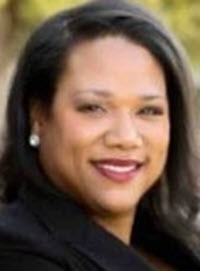Abstract
Excerpted From: Danielle W. Mason, Environmental Justice for All, 59-JAN Trial 18 (January 2023) (46 Footnotes) (Full Document)
 People of color are often disproportionately impacted by environmental hazards. Trial lawyers can play a crucial role in righting this devastating imbalance.
People of color are often disproportionately impacted by environmental hazards. Trial lawyers can play a crucial role in righting this devastating imbalance.
In this country, more than half of the people who live close to hazardous waste sites are people of color, and they are more likely to die of environmental causes. Communities of color are 75% more likely to live near commercial facilities that emit nuisance noises and odors and near air-polluting traffic. And people of color are exposed to more air pollution across regions and income levels throughout the United States.
Environmental racism is the disproportionate impact of environmental hazards on people of color. Black children suffer disproportionally more from respiratory disease and infection than white children. A recent study revealed that racial and ethnic minorities are at higher risk of premature death due to air pollution alone.
For example, in Louisiana--which has an area known as “Cancer Alley” due to a row of polluting chemical plants--a study correlated higher cancer risk for its Black or impoverished residents because of high air toxicity. The plants have been cited as one of the leading causes of disproportionate health impacts in the state.
And we are all familiar with the struggles that the Black residents of Flint, Mich., continue to face as a result of drinking and bathing in water contaminated with lead at levels several thousand times higher than the federal standard allows. And more recently, a water shortage crisis in Jackson, Miss., with a population that is more than 80% Black, left residents without access to safe drinking water.
These communities also are more at risk for devastating impacts from events such as climate change and a global pandemic. A study of 108 urban areas that were formerly “redlined” neighborhoods (the discriminatory practice of denying services, such as mortgage loans, in certain neighborhoods based on their racial makeup) recorded temperatures in some cases up to 13 degrees hotter than non-redlined neighborhoods. And a study released in April 2021 showed that even a small increase in particulate matter emitted from power plants corresponded to increases in COVID-19 mortality.
Unfortunately, these outcomes are no accident or mere coincidence. The ugly truth is that institutional rules (such as redlining, zoning, and colorblind adaptation planning regulations; and corporate decisions often deliberately target low-income, minority communities for the siting of polluting factories and hazardous waste disposal because these communities have very little ability or power to fight against them. Building on the environmental justice movement that began in the 1960s, trial lawyers can deploy their legal and advocacy skills to fight this injustice.
[. . .]
The health and wealth disparity of people of color continues to widen as affected communities cannot afford or do not have access to proper medical treatment or preventative care, nor can they sell their properties and move to a safer location. New and innovative litigation strategies are both warranted and needed to solve these systemic problems and truly achieve liberty and justice for all.
For more resources and to connect with other AAJ members handling these cases, join the Environmental Racism Litigation Group. With a focus on specialized practices and specific products, AAJ Litigation Groups allow trial lawyers to quickly share ideas, experiences, and resources in a secure environment. Go to justice.org/litigationgroups.
Danielle W. Mason is a founder of Bullock Ward Mason.


